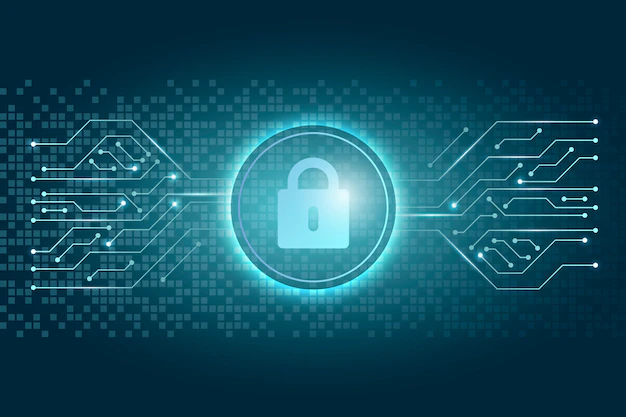Now that many organizations have transitioned to partially or fully online workplaces, cybersecurity has become more important than ever before. During the pandemic, cybersecurity attacks increased by nearly one-third. Almost 100% of organizations say they would want more effective cybersecurity. As protecting trade secrets, confidential information, and private data is a top concern for organizations, it is vital to have cybersecurity policies and procedures in place. This article will discuss the top issues to be considered in a cybersecurity protocol.
Why is Cybersecurity Important?
Cybersecurity is a major part of many organizations, and a cybersecurity breach can be detrimental. When a breach occurs, hackers can access not only important organization information but also client information. This information can then be sold to others and used for identity theft. A breach where client data is accessed can cause distrust in the organization. Trade secrets can also be sold to other organizations and competitors drastically effecting business and profits. Breaches can also damage and corrupt data, making it no longer accessible and making it difficult or even impossible to recover.
Major Issues to Focus On
Cyberattacks are not only a national issue, but a global one. Earlier this year, authorities from the United States, Australia, and United Kingdom released an advisory regarding the increase in cyberattacks in 2021. Although cybersecurity is a constantly evolving area, there are some issues that continue to affect businesses.
1) Top Cyberattack Methods: According to the advisory, the top three methods for cyberattacks continue to be phishing emails, Remote Desktop Protocol (RDP) exploitation, and exploitation of software vulnerabilities.
Phishing, or the use of suspicious links or attachments, should stay high on the cybersecurity radar, as it is one of the easiest to prevent through employee training. Employers must train their employees on how to identify phishing and what to do in the case they receive a suspicious e-mail. RDP software provides access to a desktop remotely. Through RDP, attackers are able connect, access, and control data and resources remotely, as if they were doing it locally. Outdated software leaves vital data unprotected and easily accessible by hackers.
2) Approach Changes: Some cyberattack approach changes that hackers have been making include using cybercriminal services-for-hire, diversifying their extortion methods, and shifting away from hacking larger scale organizations.
In the past year, many hackers began employing independent services to further their illegal activity, such as companies to collect extortion payments from victims. Extortion has changed from what is called “double extortion” to “triple extortion” which includes, threatening to publicly release stolen sensitive information, disrupting the victim’s internet access, and threatening to inform third parties about the incident.
3) Targeting: Trends have shown that hackers are increasingly targeting the cloud, managed service providers, and on holidays and weekends.
Known vulnerabilities in cloud applications make it easier for cyberattacks on this type of data storage. Managed service providers have access to the data of their many clients, thus accessing through them allows access to multiple organizations at once. Holidays and weekends have become more desirable times to conduct cyberattacks because IT employees or vendors will not be present to defend against an active attack.
Communicate With Your Provider
If the organization does not yet have a cloud provider, it is advised to vet various providers in order to determine which one will be the most secure. Comparing the different security measures each companies provides and inquiring about breach history are two main factors in determining which provider will serve the organization’s needs best. Security measures may include options for passwords, encryption, and additional preventive measures for hacking. Breach history allows for preparation in the case of any potential breaches in the future.
Communicate With Your Employees
The organization’s cybersecurity policy should be properly documented and distributed to all employees, supervisors, and managers. This will ensure that everyone is aware and kept up to date on how to conduct their cyber activities. Further, employees should receive training on the cybersecurity protocols so that all employees know how to properly engage in cyber activities, without unintentionally violating any policies. Upon hiring, new employees should also receive this training. Training can be conducted on a regular basis or any time the cybersecurity infrastructure sees a significant change.
Recommended Procedures
It is also suggested to backup the information that is being stored in case of any issues and to keep these backups offline, where they are more difficult to access. Some additional tips include:
1) limit privileges so that only certain accounts can access the information (these accounts should also be password protected);
2) encrypting sensitive documents to provide an additional barrier to hackers;
3) periodically delete outdated and no longer needed information that is being stored;
4) keep track of who is accessing the information to detect unnecessary activity;
5) keep software updated to ensure preexisting and new data is protected.
Conclusion
Cybersecurity is a top priority in many organizations. Keeping confidential information and data safe is a key part of an organization’s success and a data breach can have extreme negative impacts on this success. To create a strict cybersecurity policy, employers must first vet multiple providers, communicate the established policy with employees, and train employees accordingly. With remote work on the rise, evaluating their cybersecurity may be something employers want to consider.

